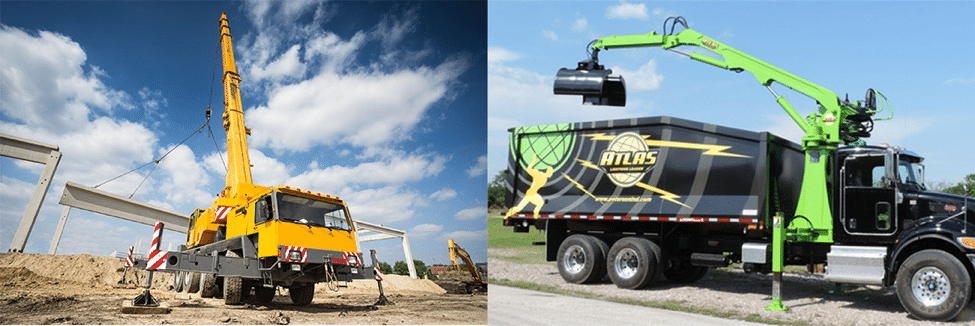Petersen provides the industry standard Lightning Loader as one of our original products. It’s one of the knuckle boom trucks that helped put us on the map many years ago, and it’s still powerful and pertinent to this day. But why is it called the lightning loader and not the lightning crane?
There are critical distinctions that we must adhere to for the lightning to be labeled a crane. All of these distinctions would be counterintuitive to the design of the loader as well as an unnecessary usage of time and resources. There are many differences between our knuckle boom trucks and industry cranes on the market. These reasons have to do with the lifting arms, the role of the operator, and the mobility of the vehicle.
Lightning Loader vs. Crane

The Lifting Arm – The lifting arm of both devices is the most noticeable difference between the two. The cranes typical lifting arm will be angled up in one straight line and stabilized at the bottom. This layout allows for easy pivoting and swiveling of large objects as is often seen on construction sites.
The Lightning Loaders arm is distinctly different. It doesn’t rise to the same height and is attached to the frame of the truck meaning that it cannot carry or sustain weight near that of an industrial crane. This feature is because the lightning loader is not designed to do the same work that a crane does. The Lightning Loader has a two-part system for quicker mobility and extendable reach. The unity works perfectly for the loaders design which is to gather many objects quickly like trash runs or excavations.
The Role of the Operator – In a crane, the operator disconnects from where the crane is stemming. Since the crane itself is large and fastened to its base, the crane operation area is usually either attached near the base or sometimes in an entirely different area. While this can be beneficial for the operator since they can see the entire worksite, it can make precision harder to achieve.
For the Lightning Loader, the technician controls the arm at the base of the crane. This positioning lets the driver remain close to the action and have much more accuracy when it comes to picking up lots of debris quickly.
The Mobility of the Vehicle – Most cranes will require separate transportation. The large sized cranes are bolted to the ground and stabilized from there. It is designed for stability and moving large pieces of construction material in a closed environment with virtually zero mobility.
The Lightning Loader was purposefully designed to be able to act quickly. With a lightweight lifting arm attached to the base of the truck and has a heavy duty dumping area. The Lightning loaders are created to be able to gather objects from small-scale construction materials to trash pickups quickly.
Petersen Industries
Petersen Industries specializes in loaders. Our lifting arms are perfectly able to complete the desired job effectively and efficiently. While there are a plethora of testing criteria that must be achieved to be labeled a crane, we prefer to remain faithful to our loader brands. If you are looking for the best loaders and knuckle boom trucks on the market, call us today.
